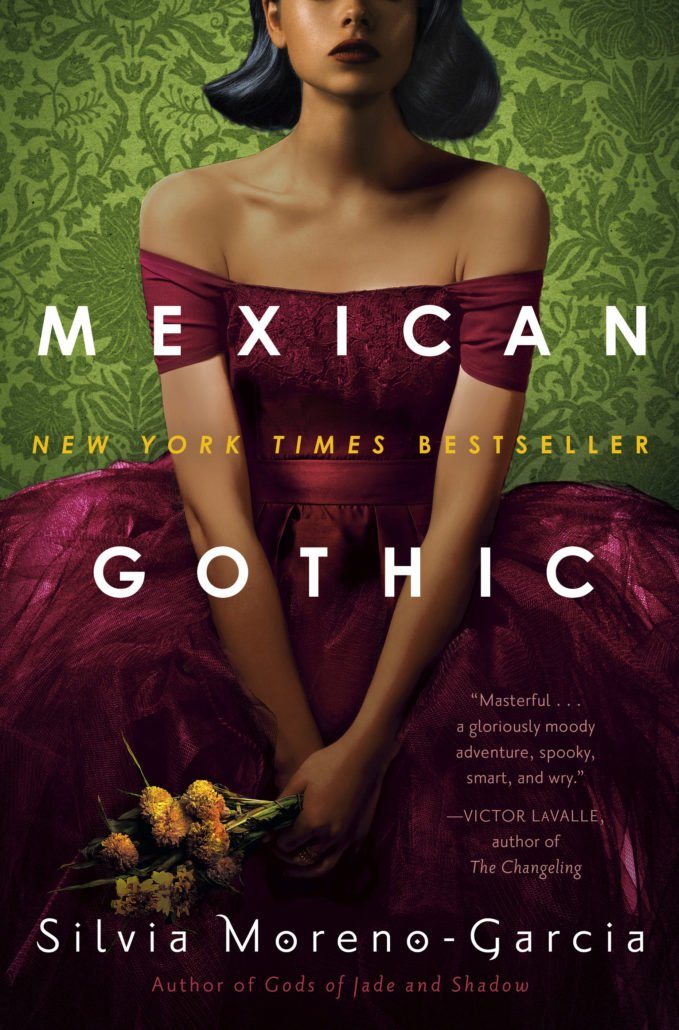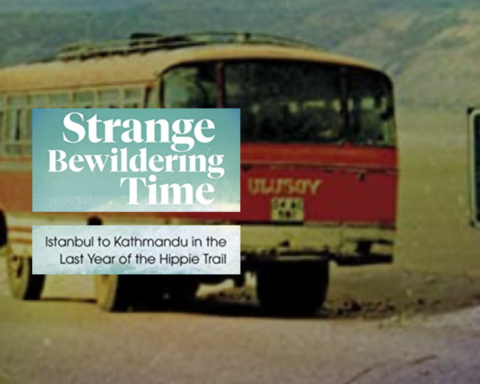Have you ever looked at the folds inside a mushroom head? They sit close together, filling the head in disturbing, perfectly identical rows of flesh that, if looked at too intently, seem to multiply forever. I admit to being both fascinated and repulsed by the sight, as if the folds were capable of sucking me into an eternity of multiplying spores.
In Mexican Gothic, Silvia Moreno-Garcia’s fifth novel, the sensual and the repulsive intertwine into a story that is equally delicious as it is terrifying.
It is 1950 in Mexico City. A young woman of a prominent family, Noemí Taboada, is sent by her father on a mission to the mountain town of El Triunfo. Noemí’s cousin, Catalina, is married to Virgil Doyle, the son of an old English family made rich through silver mining in the town. Despite being recently married, Catalina has sent an alarming letter to her uncle claiming to be ill and in desperate need of help.

Soon, Noemí is on her way to El Triunfo to determine the nature of Catalina’s illness and report back to her father. By the time Noemí descends at the empty train station and is driven to High Place, the ancestral mansion of the Doyles, we are firmly in gothic novel territory, a genre that Moreno-Garcia pays brilliant homage to while simultaneously subverting it. The novel, published last year during the pandemic, will be adapted into a television series by Hulu.
This is no wonder: Moreno-Garcia is a master of mood and setting, with High Place, the former decadent-but-now decaying home of the Doyle’s, as memorable and vivid a place as Daphne du Maurier’s Manderley estate in her 1938 novel, Rebecca. And, as Manderley, High Place is a character unto itself, yet one that, despite its luxurious velvet curtains, hundreds of pieces of silver and formal gardens, fails to impress Noemí.
From the moment she sets foot inside after being picked up by Francis, the shy, sickly nephew of Howard Doyle, High Place’s builder and the family patriarch, Noemí, notices the dust on the curtains, the dullness of the silver, the dim of the lights, and especially the mold on the now fading wallpaper. What’s more, to Noemí’s horror, Catalina seems to be not only physically but mentally ill as well.
But Noemí, as irreverent as she is smart and fashionable, is at first undaunted by the strangeness and rigidity of the Doyles: she insists on talking at the dinner table, even when she’s told this is not allowed, and continues to smoke on her room despite the strict rules set out by Florence, Francis’ mother and the de facto eyes and ears of High Place. She is also determined to find out the source of Catalina’s illness and frightening behaviour.
However, despite Noemí’s strength of character and clear scientific mind — she is an anthropology student back in Mexico City — the lugubrious mood of the house starts to affect Noemí as true horrors imprinted in the walls of High Place start to reveal themselves.
Fascinating & thoroughly horrifying
Soon, Noemí starts to have vivid, disturbing dreams, and as the book progresses, her grip on reality becomes more tenuous. One of the greatest accomplishments of Moreno-Garcia is to blur this division almost indistinguishably for the reader. Chapters that start as matter-of-fact, slowly dissolve into dreams, and these into hallucinations, to the point we experience Noemí’s sense of dislocation at the same time she is experiencing it.
However, by the time Noemí starts to experience the effects of the house, Moreno-Garcia has built the character of Noemí so thoroughly that she remains, satisfyingly, a very reliable narrator.
Moreno-Garcia, who has a master in science and technology studies from the University of British Columbia, uses her scientific eye to explore, quite in-depth, the world of mushrooms, and in particular, the hallucinogenic and more dangerous, toxic species of fungi.
It is a topic that she exploits with both a scientific and literary eye as fungi and their pulsing, breathing spores become a key point of the novel’s plot. Suffice it to say that some sections of the story may read like a mycophobic’s worst nightmare, though this is no criticism — this aspect of the book is fascinating and thoroughly horrifying.
But the scientific, metaphorical, and symbolic meaning of mushrooms is not the only theme explored. Moreno-Garcia, who was born in Mexico but moved to Vancouver over a decade ago, also touches on eugenics, racism, and the legacy of colonialism. Noemí learns that Doyle’s fortune was built on the back of Mexican miners working on the Doyles’ silver mine and that the so-called English cemetery located next to the house may be filled with the bodies of workers who mysteriously died while toiling at the mine.
Through Noemí, an elegant, Gauloises-cigarette-smoking, party-going, piano-playing young woman, Moreno-Garcia also creates a vivid picture of a certain segment of Mexican society in the 1950s. It provides a glimpse of a thriving, modern Mexico city, which is then contrasted with the old-world stiffness and decay of High Place and its English inhabitants.
As Noemí starts to uncover the Doyles’ impact on the town as well as other even more devastating secrets, her life becomes further endangered. Moreno-Garcia keeps a wonderful hold on the atmosphere as the tension grows and the satisfying conclusion takes place. And just like the hold High Place has on its inhabitants, the unforgettable mood set by Mexican Gothic remains in the reader’s mind long after they close the book.
French Editor - Born in Venezuela, Andreina Romero is a freelance writer with New Canadian Media. Prior to writing for New Canadian Media, Andreina was a bilingual contributor at The Source Newspaper, also known in French as La Source, an intercultural newspaper in Vancouver. She is also the creator and host of the podcast Girls Talk About Music and Wigs and Candles which explore music and period films from a uniquely female and Latin American lens. In 2020, Romero also co-founded Identity Pages, a youth writing mentorship program.





